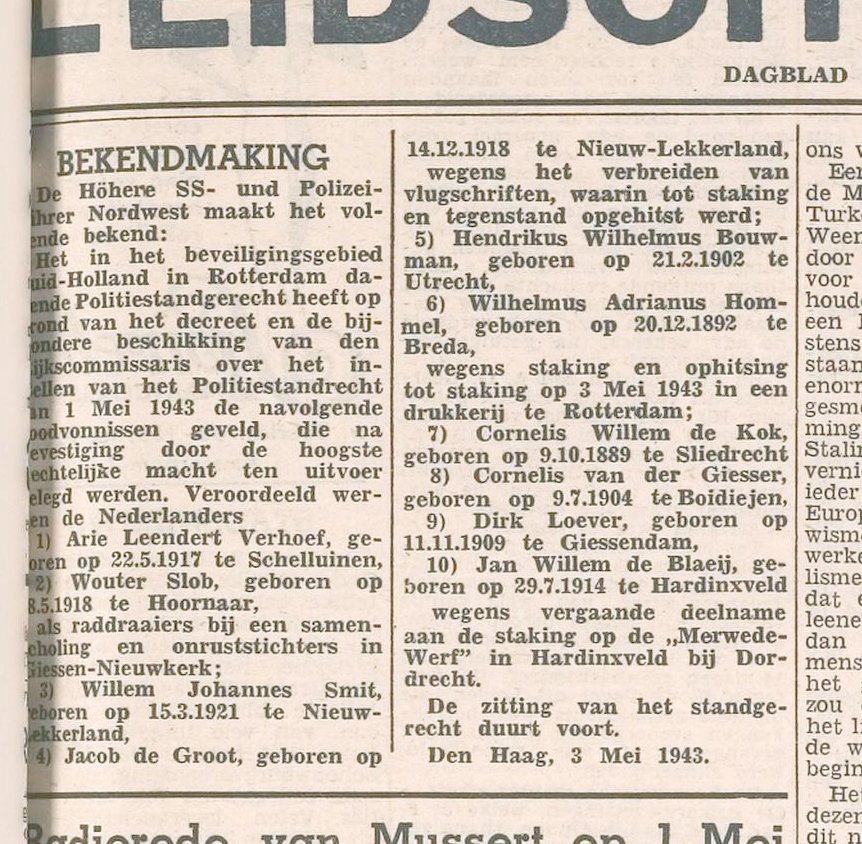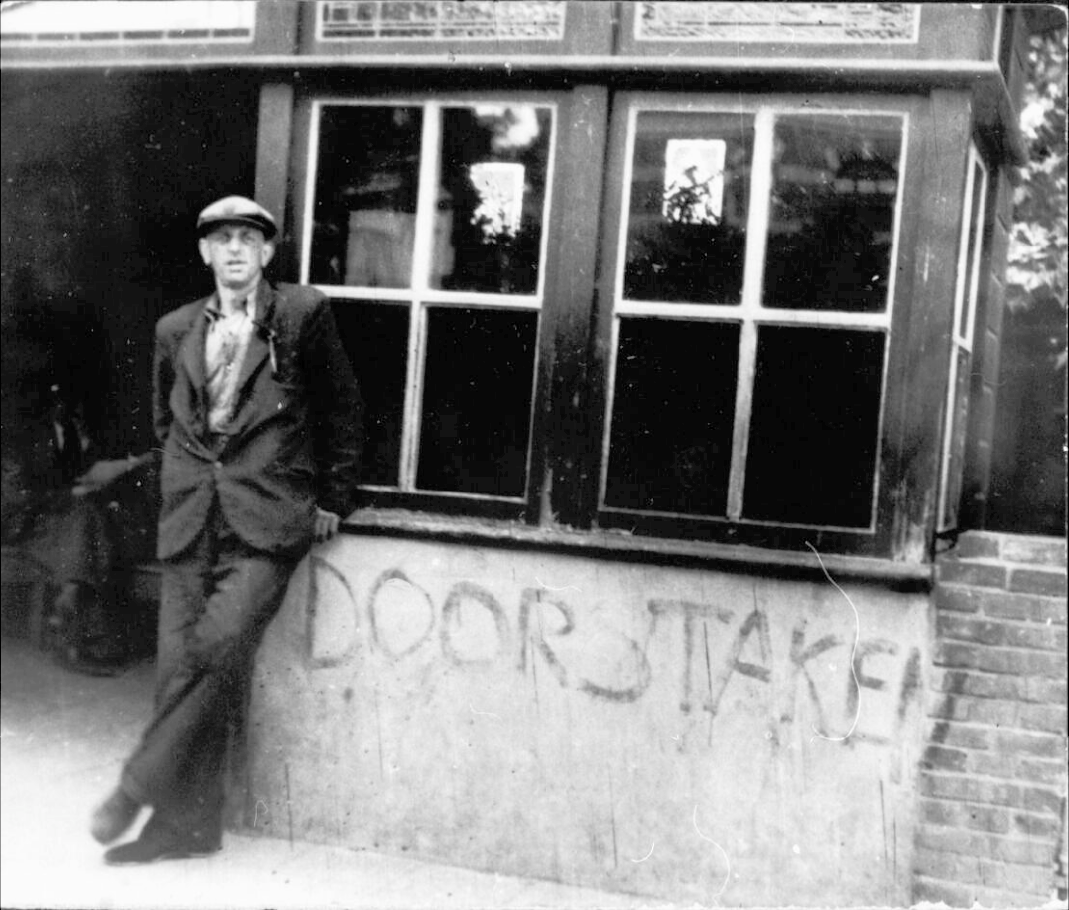On 29 April 1943, the employees of the Stork machine factory in Hengelo went on strike. The strike quickly spread to other parts of the Twente region and one day later to other parts of the Netherlands.
The wave of strikes was a reaction to the Nazis’ decision to take the Dutch soldiers prisoner again. One month after the German invasion in May 1940, the captured Dutch soldiers had been released, on the condition that they would not resist the occupying forces. However, the Nazis discovered that many soldiers had become members of the Ordedienst, a resistance group, and decided to summon the soldiers for forced labour (Arbeitseinsatz).

